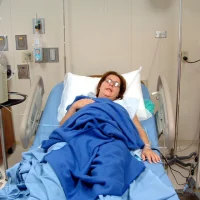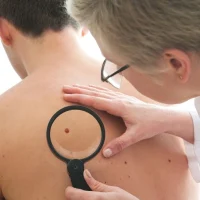Physicians are taught to deliver the results of patients’ biopsies in person, but a survey of patients at three US melanoma clinics indicates that many patients prefer an expedient phone call to the longer wait associated with a face-to-face follow-up visit.
“We thought they would want it to be in person or by email, but it turned out that the phone was most preferred; it’s quick and it also gives them the chance to ask questions,” said co-author Dr. Maria Wei, director of the melanoma surveillance clinic at the University of California, San Francicso (UCSF). The other two clinics involved in the study were located at Duke University and the University of Pennsylvania.
Are Doctors Less Likely To Call With Bad News?
298 dermatology clinic patients averaging 54 years of age were asked in advance how they would prefer to receive biopsy results; they did not yet know whether they would need the biopsies, although about 9 in 10 had a previous history of melanoma. Approximately two-thirds preferred speaking directly with their doctor over the phone, with 20 percent preferring to receive their test results in person at the clinic. More than half of the participants said they would have the same preference for the method of disclosure, whether their biopsy results were negative or positive.
When physicians were surveyed about their opinions on the topic, most said that phone calls were the best option. However, fewer doctors said they were likely to make the call themselves if the test results were negative. Of the 84 physicians surveyed, 57 percent said they would make a call themselves to deliver bad news. Meanwhile, 31 percent said they would call with good news, with many preferring to delegate those calls to assistants.
Few Patients Favour Email
The convenience afforded by technology does not extend to all areas of patient care. Less than 3 percent of respondents said they would prefer to receive biopsy results by email; an even smaller number of patients were interested in receiving text messages. Physicians, too, did not favour email as a means to communicate biopsy results.
At the Duke clinic, an online patient portal allows patients to schedule appointments and access test results. Patients at Duke chose the portal as their second choice for receiving results, after phone calls. While face-to-face meetings were the second choice at UCSF and Penn, just 5.6 percent of Duke patients had such a preference.
“As generations change and as technology changes, we may be moving more in that direction,” said dermatologist Dr. Jennifer Stein of New York University School of Medicine, who wrote an accompanying editorial in JAMA Dermatology. “As we move toward more patient-centered care, this shows that just asking a patient how they want to receive information can be really illuminating.”
Study Limitations
Some limitations of the study were its small sample size and its concentration on academic medical centres, which differ from community clinics. For example, ethnic minorities and those with low English-language proficiency were not well-represented. The participants in the study were highly educated, with 48 percent having college experience and 34 percent having gone to graduate school.
Additionally, the physicians surveyed for the study were young, averaging 43 years of age with 11 years of practicing medicine. It is also not known whether patients who need biopsies for other types of cancer would prefer receiving their results via phone calls versus face-to-face meetings.
Source: JAMA Dermatology
Image Credit: Flickr










